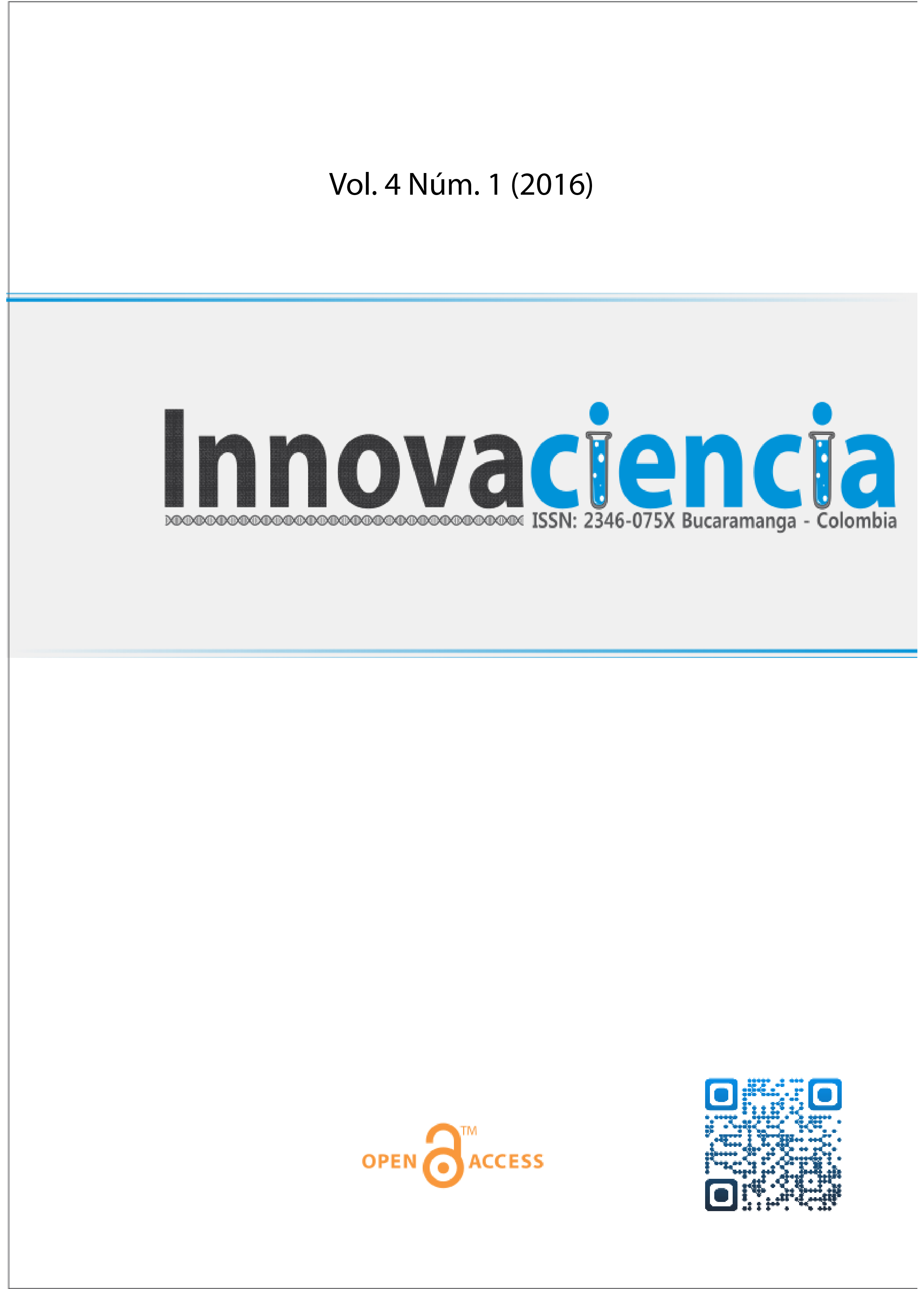STRATEGY FOR UNDERSTANDING THE FUNDAMENTALS OF CELLULAR RESPIRATION THROUGH THE USE OF ELECTRONIC DEVICES
DOI:
https://doi.org/10.15649/2346075X.397Keywords:
Glucometer, Oxygen saturation, Pedagogical strategy, Test of stepAbstract
Introduction: The development of strategies that involve the applicability of the concepts learned in everyday situations, constitutes
a key tool to integrate the competences of to know with the to do
competences. Some electronic devices used frequently in the job of
the nurse to assess aspects of the health of the patients were tested
like materials to support the teaching of the cellular respiration and
mitochondrial activity. Methods: This project was developed with a
group of 34 students, from the first semester of Nursing Faculty of the
Universidad Cooperativa de Colombia, they were divided into eight
working groups with roles assigned to evaluate in an indirect form
the processes of cellular respiration and its interrelationship with other biological systems through the techniques of pulse oximetry, glucometry and infrared thermometry, during three moments (rest, exercise and relaxation) in the test of step. Results and Discussion: The
students raised scientific questions and established hypothesis before
making the measurements of the variables. The students showed a
good acceptance by the work outside the classroom. Using the evaluation rubric we found that students failed in the confrontation of
the hypothesis due to the inability to identify and graphing variables,
similarly showed minimal competences to correlate and integrate the
information obtained experimentally. Conclusions: Was developed,
implemented and evaluated the proposed practice integrating and
conceptualising the knowledge related to the cellular respiration and
mitochondrial activity. The strategy presented allows to improve the
learning of the students, it requires little investment, favors the short
researches, but requires basic skills in scientific and critical thinking,
in addition to earlier practices that introduce the student to the world
of science. The students showed a greater performance in to do competences more than to know competences.
References
(1) Campbell M K, Farrell SO. Bioquímica. Sexta Edición. México, D.F: Cengage Learning Editores, S. A; 2009.
(2) Becker W, Kleinsmith L, Hardin J. El Mundo de la Célula. Sexta edición. Madrid: Pearson Educación, S. A; 2007.
(3) Palacios S, Alvarez C, Schönffeldt P, Céspedes J, Gutiérrez M, Oyarzún, M. Guía para realizar oximetría de pulso en la práctica clínica. Comisiones de Función Pulmonar de adultos y pediátrica, Sociedad Chilena de Enfermedades respiratorias. Revista Chilena de Enfermedades respiratorias. 2010. 26:49-51.
(4) López-Herranz GP Oximetría de pulso: A la vanguardia en la monitorización no invasiva de la oxigenación. Revista Médica del Hospital General de México. 2003. 66; (3): 160-69.
(5) Trempe K, Baker SJ. Pulse oximetry. Anesthesiology. 1989. 70: 98-108.
(6) Kusinitz I, Fine M. Your Guide To Getting Fit. Tercera edición. California, USA: Mayfield Publishing Company; 1995.
(7) Gutiérrez GV, Oropeza MJR, Meza-Pérez A. Reparación del lecho ungueal con 2-octilcianoacrilato. Cirugía Plástica. 2001. 2; 2: 61-66.
(8) Jerez-Jaimes JH. Biología Celular y Molecular Aplicadas. Enfermería. Primera edición. Colombia. Autor Editor. Facultad de Ciencias Exactas, Físicas y Naturales. Universidad de Santander UDES. 2010
(9) Hammer Ø, Harper DAT, Ryan PD. PAST: Paleontological statistics software packagefor education and data analysis. Palaeontología Electrónica. 2001. 4;(1): 9pp. http://palaeo-electronica.org/2001_1/past/issue1_01.htm
(10) Durante MMaBI, Lozano SJR, Martínez GA, Morales LS, Sánchez MM. Evaluación de Competencias en Ciencias de la Salud. Buenos Aires, Argentina: Editorial Médica Panamericana; 2012.
(11) Trujillo JA. Los glucómetros en la práctica de enfermería. Desarrollo científico de la enfermería. 19 (10): 328.2011.
(12) Cogswell AM, Stevens RJ, Hood DA. Properties of skeletal muscle mitochondria isolated from subsarcolemmal and intermyofibrillar regions. Am J Physiol (Endocrinol. Metab). 1993.264:C383–C89.
(13) Palmer JTB, Hoppel C. Biochemical Properties of Subsarcolemmal and Interfibrillar Mitochondria Isolated from Rat Cardiac Muscle. The Journal of Biological Chemistry 1977. 252:8731–39. [PubMed: 925018]
(14) Menshikova EV, Ritov VB, Fairfull L, Ferrell RE, Kelley DE, Goodpaster BH. Effects of Exercise on Mitochondrial Content and Function in Aging Human Skeletal Muscle. J Gerontol A Biol Sci Med Sci. 2006. 61;(6): 534–40.
(15) Ruiz JR, Mesa JL, Pérez FM, Sáinz AG, Garzón M J. Hidratación y rendimiento: pautas para una elusión efectiva de la deshidratación por ejercicio. Apunts. Educación Física y Deportes. 2003. 70: 26-33.
(16) Aragón-Vargas LF, Maughan RJ, Rivera-Brow A, Meyer F, Murray R, de Barros TL, et al. VII Simposio Internacional de Actualización en Ciencias del Deporte. Rosario, Argentina Editorial Biosystem, Servicio Educativo. 1999. 222-30.
(17) Wilmore HJ, Costill DL. Fisiología del esfuerzo y del deporte. Segunda edición. Barcelona:Paidotibo; 1999.
Downloads
Published
How to Cite
Downloads
Issue
Section
License
All articles published in this scientific journal are protected by copyright. The authors retain copyright and grant the journal the right of first publication, with the work simultaneously licensed under a Creative Commons Attribution-NonCommercial 4.0 International License (CC BY-NC 4.0), which permits sharing the work with authorship recognition and without commercial purposes.
Readers may copy and distribute the material from this journal issue for non-commercial purposes in any medium, provided the original work is cited and credit is given to the authors and the journal.
Any commercial use of the material from this journal is strictly prohibited without written permission from the copyright holder.
For more information on the copyright of the journal and open access policies, please visit our website.
















